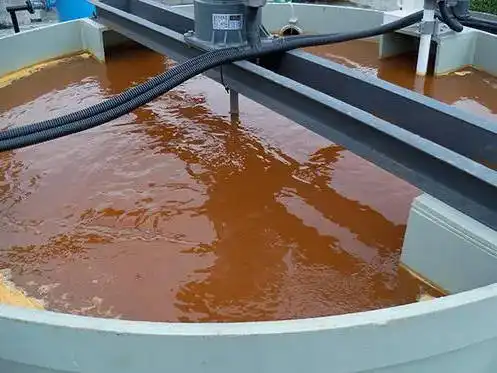Hebei Messi Biology Co., Ltd. stated that in recent years, many studies on magnesium agent decolorization have been carried out at home and abroad. The principle is to use magnesium salts and alkali to generate positively charged magnesium hydroxide precipitates, which strongly adsorb negatively charged anionic dyes. Dye wastewater is decolorized. The magnesium salt decolorization process is simple, low-cost, has a wide range of treatment agents, and is easy to implement.

For wastewater from a certain factory (black, pH value 9~10, chroma 150~250, suspended solids concentration 100~200mg/L, dyeing ingredients include direct gray, direct light fast blue and dyeing and finishing auxiliaries, etc.), magnesium hydroxide is used Decolorization treatment was carried out and the effects of pH value, magnesium salt addition, solid-liquid separation method, etc. on the decolorization effect were investigated. The results showed that magnesium hydroxide has a good decolorization effect. When the magnesium salt addition amount was 600 mg/L, the pH value was Under the conditions of 11, the decolorization rate is above 98%, and the saturated adsorption capacity of magnesium hydroxide for direct gray dye is 2.1221g/g.
Using a combined method of magnesium hydroxide adsorption and ceramic membrane microfiltration to treat printing and dyeing wastewater, the following conclusions were drawn:
(1) It is technically feasible to use magnesium hydroxide adsorption treatment and ceramic membrane microfiltration to treat reactive dye wastewater. Under certain conditions, the decolorization rate of 0.1 μm and 1.0 μm membranes can reach more than 98%.
(2) The appropriate treatment conditions are: 1.0μm membrane, magnesium salt addition amount of 600~800mg/L, pH value of 11~12, operating pressure of 0.15MPa, and cross-flow speed of 3~5m/s.
(3) The combination of magnesium hydroxide adsorption and inorganic membrane microfiltration to treat printing and dyeing wastewater has certain technological advantages. Magnesium salt adsorption can be carried out directly in the microfiltration storage tank, which can achieve integrated and rapid separation, and the effluent is clear and transparent. It may be recycled and used as water for printing and dyeing.
For acid blue sodium and blue (red) wastewater, mixed wastewater containing dyes such as reactive violet K-3R, reactive red K-2BP and reactive orange K-GN, as well as wastewater containing a variety of printing and dyeing auxiliaries, magnesium salts are used as treatment agents. Decolorization treatment, with good decolorization effect. When the magnesium salt addition amount is 600mg/L and the pH value is 11.0~11.5, the decolorization rate is above 91%. Under the same conditions, the decolorization effect of the magnesium salt method is better than that of the iron salt method, and due to the oxygen consumption of the residual iron in the iron salt method, the turbidity of the discharge liquid increases and the dissolved oxygen decreases. The residual magnesium left by the magnesium salt method has no impact on the environment.
The adsorption rules of magnesium hydroxide to water-soluble dyes (acidic, alkaline, direct) were studied. These dyes can be effectively adsorbed by magnesium hydroxide, and those prepared from magnesium sulfate are more effective than those prepared from magnesium chloride. The thermodynamic parameters and Langmuir constants of different dyes adsorbed by magnesium hydroxide were also discussed. The dyes in the tested wastewater include: acid orange, acid red, direct red and direct orange. Boon2] compared the characteristics and advantages of magnesium salts, aluminum sulfate and polyaluminum chloride in treating printing and dyeing wastewater. Magnesium chloride has many advantages over the latter two and can reduce sediment settling time. The results of wastewater treatment from printing and dyeing plants show that the decolorization rate is 97.9%, and the COD and suspended matter removal rates are 88.4% and 95.5% respectively.
